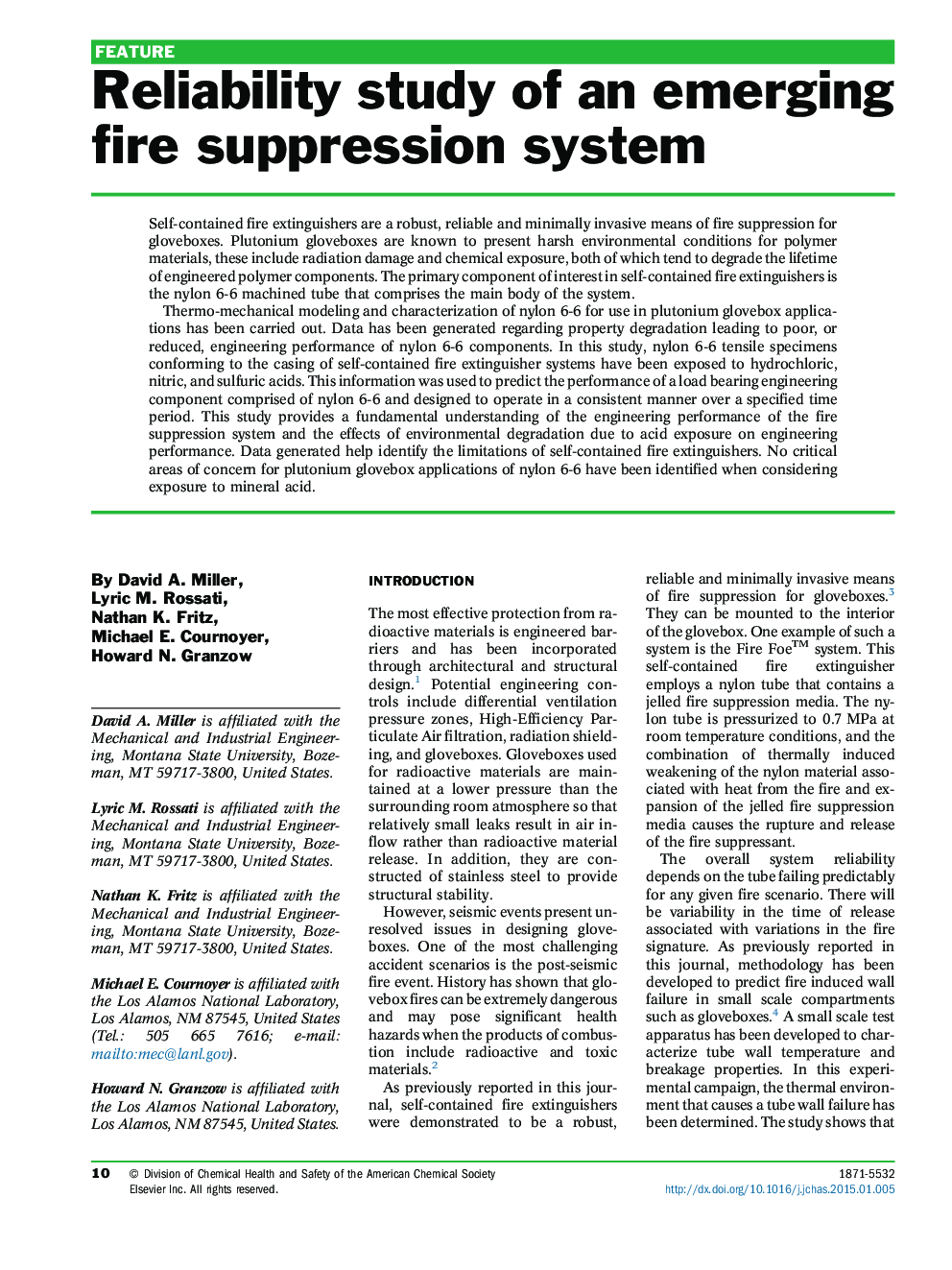| Article ID | Journal | Published Year | Pages | File Type |
|---|---|---|---|---|
| 574135 | Journal of Chemical Health and Safety | 2015 | 9 Pages |
Self-contained fire extinguishers are a robust, reliable and minimally invasive means of fire suppression for gloveboxes. Plutonium gloveboxes are known to present harsh environmental conditions for polymer materials, these include radiation damage and chemical exposure, both of which tend to degrade the lifetime of engineered polymer components. The primary component of interest in self-contained fire extinguishers is the nylon 6-6 machined tube that comprises the main body of the system.Thermo-mechanical modeling and characterization of nylon 6-6 for use in plutonium glovebox applications has been carried out. Data has been generated regarding property degradation leading to poor, or reduced, engineering performance of nylon 6-6 components. In this study, nylon 6-6 tensile specimens conforming to the casing of self-contained fire extinguisher systems have been exposed to hydrochloric, nitric, and sulfuric acids. This information was used to predict the performance of a load bearing engineering component comprised of nylon 6-6 and designed to operate in a consistent manner over a specified time period. This study provides a fundamental understanding of the engineering performance of the fire suppression system and the effects of environmental degradation due to acid exposure on engineering performance. Data generated help identify the limitations of self-contained fire extinguishers. No critical areas of concern for plutonium glovebox applications of nylon 6-6 have been identified when considering exposure to mineral acid.
